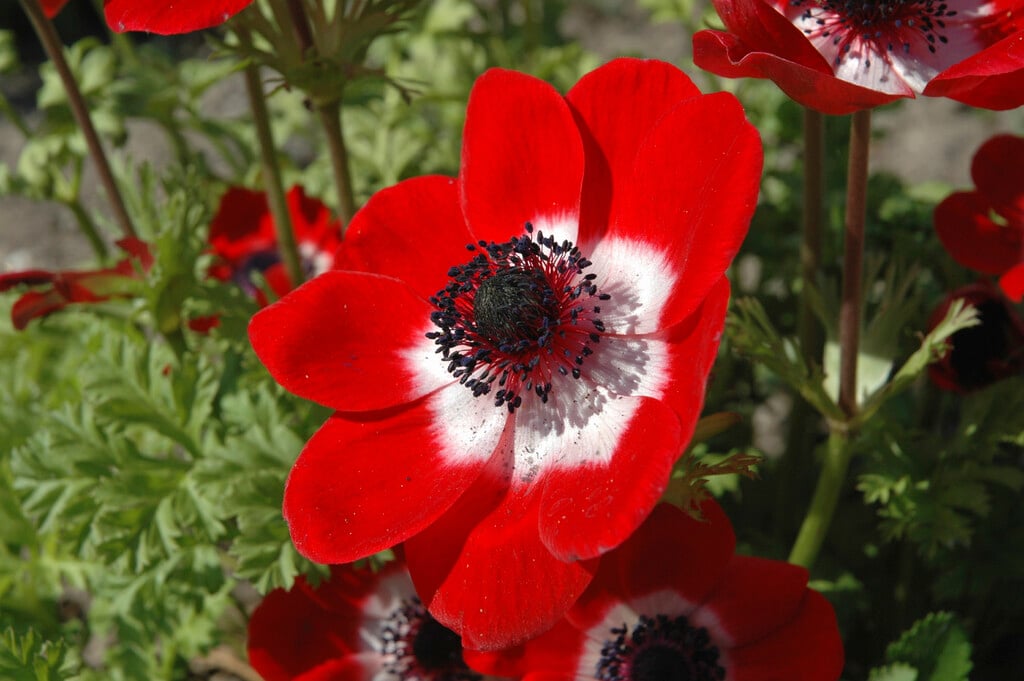Anemone hortensis
broad-leaved anemone
Clump-forming perennial about 45cm tall, with deeply-divided, palmate mid-green leaves, and during spring, upright stems carry fragrant single flowers to 6cm across, in colours ranging from white or pale blue to pinkish-mauve with central purplish stamens and blue anthers
Synonyms
Anemone stellata Lam.Anemone hortensis var. stellata
Size
Ultimate height
0.1–0.5 metresTime to ultimate height
2–5 yearsUltimate spread
0.1–0.5 metresGrowing conditions
Moisture
Well–drainedpH
Acid, Alkaline, NeutralColour & scent
| Stem | Flower | Foliage | Fruit | |
| Spring | Blue Pink Purple White | Green | ||
|---|---|---|---|---|
| Summer | Green | |||
| Autumn | ||||
| Winter |
Position
- Full sun
Aspect
East–facing or South–facing or West–facing
Exposure
Exposed or Sheltered Hardiness
H6Botanical details
- Family
- Ranunculaceae
- Native to GB / Ireland
- No
- Foliage
- Deciduous
- Habit
- Clump forming
- Genus
Anemone are herbaceous perennials with fibrous, rhizomatous or tuberous rootstocks, palmately lobed leaves and saucer-shaped, usually 5-petalled flowers
- Name status
Correct
- Plant range
- Mediterranean
How to grow
Cultivation
Grow in well-drained, humus-rich soil in sun or part shade. See anemone cultivation
Propagation
Propagate by seed, sowing in containers in a cold frame when ripe; or propagate by division of tubers in summer when they are dormant
Suggested planting locations and garden types
- City and courtyard gardens
- Coastal
- Cottage and informal garden
- Wildflower meadow
- Mediterranean climate plants
- Patio and container plants
- Flower borders and beds
- Underplanting of roses and shrubs
Pruning
No pruning required
Pests
May be susceptible to leaf eelworms and damage from caterpillars and slugs
Diseases
May be susceptible to Powdery mildews
Love gardening
Sign up to receive regular gardening tips, inspiration, offers and more
View our Privacy Policy
Get involved
The Royal Horticultural Society is the UK’s leading gardening charity. We aim to enrich everyone’s life through plants, and make the UK a greener and more beautiful place.

